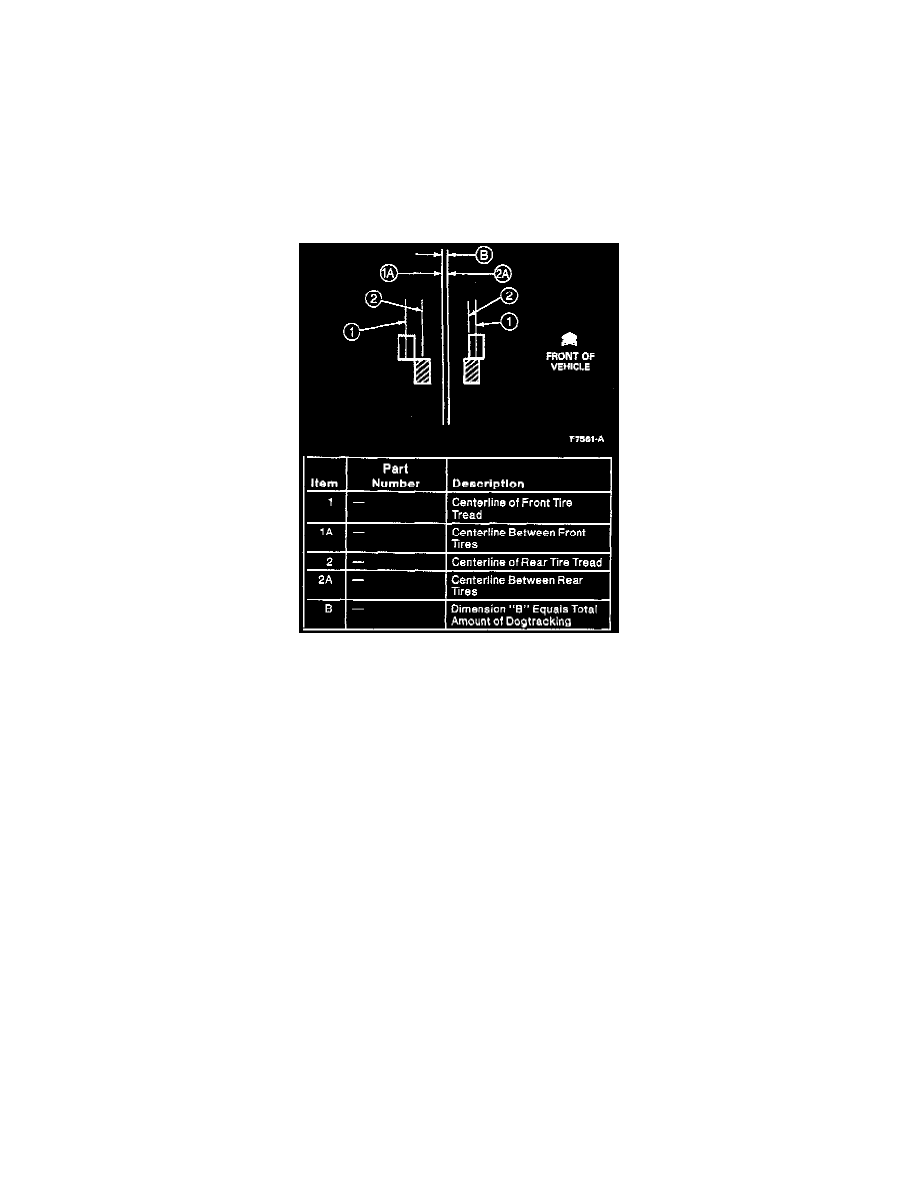Ranger 2WD V6-245 4.0L VIN X SFI (1997)

Dogtracking
To diagnose a dogtrack situation, find a stretch of empty road or an empty parking lot and perform the following steps.
1. Drive the vehicle while sighting down the hood. Use a hood ornament or a body style line to be able to see if the vehicle is going in a straight line
or dogtracking.
2. Stop the vehicle when you notice the vehicle dogtracking. Have an assistant mark the position of the center tread of both front tires with chalk on
the ground.
3. Slowly pull the vehicle forward until the rear tires are at the same position as the marks made for the front tires.
4. Have your assistant mark the ground as he did for the front tires, identifying which marks are for the front tires and which ones are for the rear
tires.
5. Move the vehicle out of the way so all marks can be seen.
6. Proceed to measure the total amount of dogtracking as follows:
^
Measure the distance between the front tire marks.
^
Mark the ground exactly halfway between these marks.
^
Do the same for the rear tire marks.
^
The difference between the two center marks is the amount of dogtracking present in the vehicle.
Tire Lead
"LEAD" is the movement or drift to one side of the vehicle from a straight path on a level road with no pressure on the steering wheel.
Lead is usually caused by:
^
Incorrect wheel alignment.
^
Uneven brake adjustment.
^
Uneven or incorrect tire inflation pressures.
^
Damaged/worn tire or construction of tire.
The way in which a tire is constructed can produce lead. An example of this is placement of the radial belts. Off-center belts on a radial tire can cause the
tire to develop a side force while rolling straight down the road. If one side of the tire is a little larger diameter than the other, the tire will tend to roll to
one side. This will develop a side force which can produce lead.
Rear Alignment
1. Raise the vehicle on a hoist to allow the rear axle assembly to be freely suspended.
